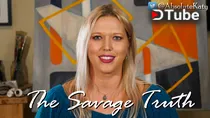
The War on Drugs. There are more African Americans in prison, in jail, on probation and on parole than there were enslaved in 1850, ten years before the start of the Civil War. This is no accident, thanks in huge part to the war on drugs. In a 1994 interview with Nixon advisor John Ehrlichman, he says,
“The Nixon White House had two enemies: the anti-war left and black people. We knew we couldn't make it illegal to be either against the war or black, but by getting the public to associate the hippies with marijuana and black people with heroin and then criminalizing both heavily, we could disrupt those communities. We could arrest their leaders, raid their homes, break up their meetings and vilify them night after night on the evening news. Did we know we were lying about the drugs? Of course we did.”
President Ronald Reagan declared the war on drugs in 1982 when drug crime was not rising, but declining. But shortly after the drug war was declared, tons, literally tons of crack cocaine flooded into Compton and South Central Los Angeles--like a political miracle. But thanks to Gary Webb, whose investigative journalism on this subject ultimately cost him his life, we know that it wasn't magic at all--it was a carefully constructed US government plot to flood black communities with drugs in order to justify the drug war, and then in turn used those profits to fund a guerrilla army in Nicaragua called the Contras.
“Crack was virtually unobtainable in the city's black neighborhoods before members of the CIA's army began supplying it at rock-bottom prices in the 1980s. For the better part of a decade, a San Francisco Bay Area drug ring sold tons of cocaine to the Crips and bloods street gangs of Los Angeles and funneled millions in drug profits to a Latin-American guerrilla army run by the US Central Intelligence Agency.”
The drug plan worked. Reagan hired staff whose responsibility was to publicize inner-city crack babies, crack mothers, crack whores and drug-related violence. The goal was to make inner-city crack abuse and violence into a media sensation, bolstering the public's perception that the war on drugs was necessary, and justifying Congress devoting millions of dollars in additional funding to it. Police departments across the U.S. were given financial incentives to meet arrest quotas for drug crimes, even in areas where drug abuse and drug crime was not on the rise.
Police departments who did not meet these quotas had their budgets cut severely, even when not enough drug users existed for them to scoop up and arrest. Today it's not uncommon to read stories about police officers all over the country planting drugs or giving false testimony in order to get drug arrests. It's not hard to make the connection between this behavior and these arrests quotas.
Filling jails with drug arrestees, particularly people of color, supports several goals.
Number one, it removes black and brown voters from participating in elections, sometimes for life due to the disenfranchisement of those who've been convicted of felonies. And thanks to mandatory minimum sentencing--which for crack cocaine was much harsher than for cocaine, which was primarily used in the white community--most of the people who are disenfranchised due to mandatory minimum sentences that carry a felony conviction are from communities of color.
Number two, it justifies continued racist policies for which politicians need only point a finger at increased incarceration rates in order to claim that there is an inherent criminality in people of color.
Number three, the for-profit prison industry is making a killing housing and incarcerated black and brown bodies.
Number four, prison labor benefits the US government and private businesses alike with inmates making 90 cents to $4 a day. Companies like Whole Foods, McDonald's, Wendy's, Starbucks, Sprint, Verizon, Victoria's Secret, JC Penney, Kmart, American Airlines and Avis all directly benefit from these modern slaves. They receive tax incentives and are exempt from needing to provide health benefits to their workers so long as they're incarcerated.
Despite shifting attitudes, with 22 states plus Washington DC having now decriminalized recreational use of marijuana and 29 other states having some sort of legalized medical marijuana, arrest rates across the U.S. are still alarmingly high--and incredibly unbalanced. In 2016, there were more arrests for marijuana possession than all violent crimes combined. And it's disproportionately affecting black and brown communities. In Colorado, for instance, recreational marijuana was decriminalized in 2012. The arrest rates for white citizens has plummeted, while black and Latino arrests have actually doubled.
So what can we do about this? First of all, we need to recognize the war on drugs for what it is: a literal war on black communities and a political tool for silencing dissent. It was never about drugs. It was never about protecting people. We also need to talk about and promote stories that expose the dishonest and unethical use of militarized police who operate as slave patrols for for-profit prisons and prison labor--no company should have a profit incentive to incarcerate anyone in America. Get informed and vote only for candidates who oppose for-profit prisons and support relaxing drug laws. And the best thing you can do is to get involved and support--either with your time or with your money—organizations that are working every day to end the devastating effects of the war on drugs.
And share this article! So we can shift people's perspectives to a more compassionate approach to prisons and drugs. Together, we can make a difference.
▶️ DTube
▶️ IPFS